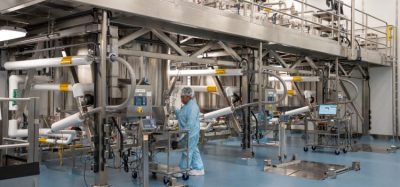The role of GAMP 5, data integrity and QbD in pharmaceutical quality assurance
Posted: 8 March 2024 | Catherine Eckford (European Pharmaceutical Review) | No comments yet
By ensuring accurate and reliable data in drug development, data integrity supports regulatory compliance and drug safety, a paper explains.


Researchers have described the impact of data integrity, GAMP 5 and quality by design (QbD) principles on pharmaceutical quality assurance (QA), highlighting the importance of data integrity through various case studies.
The authors explained first that “a robust quality assurance framework” is needed to ensure medicinal products are safe and efficient.
Pedro et al. defined GAMP as ‘good automated manufacturing practices’, with GAMP 5 being “a widely used framework for validating automated systems that establishes quality assurance practices. Data integrity guarantees the reliability of data collected throughout various stages of drug development.”
Therefore, GAMP 5 offers a “significant reduction in the risk of errors and ensuring compliance with regulatory standards”, according to the authors.
Data integrity, GAMP 5 and QbD
Valuable tools for upholding product quality standards
It was also noted in the paper that in implementing ALCOA+ “data integrity risks can be detected, preventing delays or issues with the regulatory approval of products and thus making it a cost-effective solution.”
As for its benefits in pharmacovigilance, the paper explained that GAMP 5 “helps organisations maintain high-quality standards in adverse event reporting and analysis, ensuring the safety of patients and the integrity of data. It provides a valuable framework for ensuring the compliance and quality of computerised systems used in pharmacovigilance activities.”
Therefore, to achieve this, quality by design offers a systematic approach to development, the authors stated. Chiefly, it “emphasises a deep understanding of critical quality attributes, risk management, and continuous improvement.” Overall, the paper summarised that these principles enable organisations to meet regulatory requirements and as a result, facilitate the production of safe medicines.
Pedro et al shared: “Given that ‘where a computerised system replaces a manual operation, there should be no resultant decrease in product quality, process control or quality assurance’ GAMP were created”, adding that these guidelines should be applied to validate and maintain automated systems and so produce high-quality products.
GAMP 5 update: computerized system expectations for pharma manufacturers
Benefits of Pharma 4.0
The authors asserted that Pharma 4.0 “has the potential to solve some of the biggest obstacles currently facing the industry while also aiding the competitive process.”
Quality by design supports the move towards Pharma 4.0, according to the paper, by “demanding data and risk-based approaches for drug development and stringent regulations, as well as an increasing focus on patient safety and benefits when bringing new drugs to market.”
The paper highlighted International Society for Pharmaceutical Engineering (ISPE)’s emphasis on the importance of ‘data integrity by design’ as a “desirable outcome of digital maturity, making data integrity one of the most promising areas of Pharma 4.0.”
Pedro et al. concluded that there is “unexploited potential of QbD and data integrity, indicating a pressing need to intensify its implementation. By doing so, the industry can propel itself forward and reinforce its commitment to continuous improvement in line with the evolution of the regulatory landscape.”
The paper was published in Drug Discovery Today.









